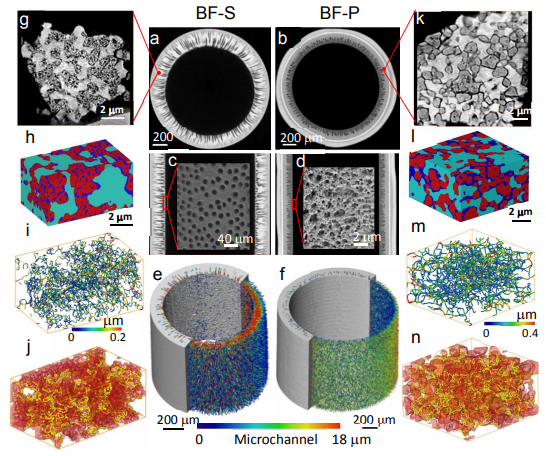The Application of Hierarchical Structures in Energy Devices: New Insights into the Design of Solid Oxide Fuel Cells with Enhanced Mass Transport
Mass transport can significantly limit the rate of reaction and lead to concentration polarization in electrochemical devices, especially under the conditions of high operating current density.

In this study we investigate hierarchically structured micro-tubular solid
oxide fuel cells (MT-SOFC) fabricated by phase inversion technique and quantitatively assess the mass transport and electrochemical performance improvement compared to a conventional tubular SOFC. We present pioneering work to characterize the effective mass transport parameters for the hierarchically porous microstructures by an integrated computed fluid dynamics simulation, assisted by multi-length scale 3D X-ray tomography.
This has been historically challenging because either imaging resolution or field of view has to be sacrificed to compensate for the wide pore size distribution, which supports different transport mechanisms, especially Knudsen flow. Results show that the incorporation of radially-grown micro-channels helps to decrease the tortuosity factor by approximately 50%
compared to the conventional design consisting of a sponge-like structure, and the permeability is also improved by two orders of magnitude. When accounting for the influence of Knudsen diffusion, the molecule/wall collisions yield an increase of the tortuosity factor from (continuum flow) to (Knudsen flow), but the addition of micro-channels help to reduce it down to Electrochemical performance simulations using the measured microstructural and mass transport parameters show good agreement
with the experimental results at elevated temperatures. The MT-SOFC anode displays 70% less concentration overpotential, 60% higher power density (0.98 vs. 0.61 W cm-2) and wider current density window for maximum power density than the conventional design.